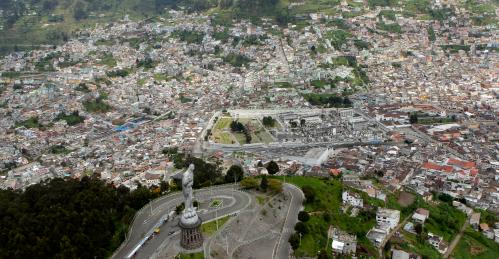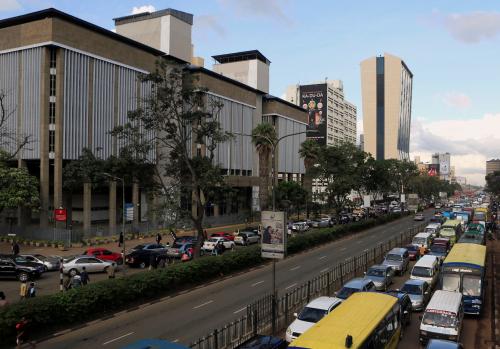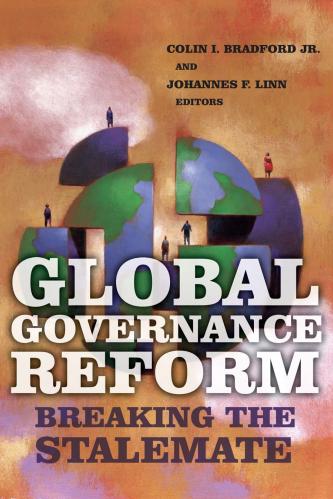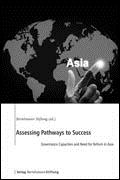In October 2016 representatives from national governments, cities, the private sector, and civic organizations will gather in Quito, Ecuador for the United Nations Conference on Housing and Sustainable Urban Development, popularly known as Habitat III. For people who believe that the world’s social, economic, and environmental prospects rise and fall with the ability of cities and metro areas to design sound plans and policies, Habitat III represents a once-in-a-generation moment—the last Habitat conference was 20 years ago—to forge a global urban agenda.
In anticipation of the summit, the U.N. commissioned a report, “Urban Governance, Capacity, and Institutional Development,” [PDF download] that cuts to the heart of the challenges cities share globally. Authored by a team of experts led by LSE Cities and United Cities and Local Governments (UCLG), the report makes the case that the ability of cities to meet the massive global challenges originating within and beyond their borders will hinge on our collective ability to articulate, normalize, and formalize what LSE Cities and others have called “new urban governance.” At the highest level, key attributes of this new governance paradigm include:
- Democratic and inclusive. All residents have a “right to the city”—the ability to participate in planning, development, and evolution of the spaces they live in—and open, just, and uncorrupted political and legal institutions and practices must be in place across all levels of government.
- Long term and integrated. Plans and policies should have horizons that reflect the pace of urban development, not elections.
- Multiscale and multilevel: Networked governance is the new normal, and it demands vertical coordination across levels of government and horizontal coordination across issues and social sectors.
- Territorial. Cities are complex ecosystems, defined by interactions between their built and natural environments and the people who inhabit them.
- Proficient. The people who plan, manage, and govern cities need to meet ever-higher standards for professionalization and skills. Proficiency applies especially to the public sector, which often lacks the information and capacity to perform the complex coordination and deal making required to lead.
- Digitally conscious. New technologies create challenges and opportunities for cities. They lower the costs of information acquisition and analysis and facilitate greater transparency, participation, and accountability. But they also put privacy and security in tension, widen information asymmetries between the public and private sectors, and exacerbate inequality.
What will it take for governments, citizens, businesses, and civic groups to advance this paradigm shift in diverse cities and countries around the world? The playbook is a work in progress. New institutions will need to form, existing ones will have to evolve, and the individuals that power them will have to build new skills. The report offers recommendations, largely aimed at public sector reform and transformation—and at central governments in particular.
Develop strong multilevel governance frameworks. This step begins by outlining roles and responsibilities across levels of governments. As we have documented previously, the Danish reforms of 2007 provide a good case study. They systematically consolidated municipalities, granted important fiscal powers to local government, and increased the role and responsibility of local governments in industrial and regional economic development.
Accelerate robust decentralization processes. Central governments must determine which powers and authorities should devolve to local governments, and find ways to share resources in flexible ways that permit cities to fulfill their responsibilities. In the United Kingdom, the Manchester Devolution Agreement transformed governance from a highly centralized system to a devolved and collaborative metro arrangement in which decisions about planning, infrastructure, and housing are locally controlled. Though the experiment is in its early days, it is spreading in the U.K.: a just-announced round of “growth deals” provides 1.8 billion pounds for locally determined economic development projects, and the recent national budget included five new and extended devolution deals which the government says will “transfer billions of pounds and extensive powers from Whitehall to cities and counties.”
Increase public sector capacity. To be able to develop and implement effective urban agendas, central governments need to be led and staffed by people who understand the complexities of land use and transit planning, housing policy, and social service delivery, as well as how each of these areas interact and overlap. Public officials and staff need to understand how to leverage resources across sectors, how to create and execute complex transactions, and how to maximize the benefits of new technologies. Some central governments are responding by creating new roles and responsibilities. The U.K.’s Government Digital Services is one frequently cited example of a central government plan to bring technological expertise to the core of the enterprise. The U.S. National Resource Network was created to leverage expertise from the outside. It is a consortium-led effort to develop a capacity-building toolbox for cities, a pack of ideas curated from the public, private, and civic sectors that can help staff-strapped administrations.
These public sector reforms, if accomplished against long odds, would be transformative. But as the report also makes clear, urban governance in the 21st century is increasingly a multisector, multi-stakeholder exercise. Effective reforms also can be driven by institutional innovations outside and across the public sector, and cities can lead where national governments fail to do so.
New institutions are being designed with the explicit task of coordinating goal-oriented activity across multiple industry sectors and levels of government. Publicly owned private corporations are driving urban regeneration in Hamburg and guiding transit expansion and port redevelopment in Copenhagen. In both cases, features of the organizations could be used in other cities.
Intermediaries with the specialized skills to bridge gaps in cities’ innovation ecosystems are in high demand. The Cambridge Innovation Center and Illinois Ventures, two U.S. examples, are devoted to streamlining the process of making university-led research discoveries into products and services with market value and connecting small entrepreneurs and investors to larger firms.
There will continue to be a need for creative and effective instruments to finance urban development objectives, measure progress, and ensure accountability. From “Pay for Success” initiatives and social impact bonds to efforts to build integrated data systems to inform and improve social service delivery, the set of tools is growing more sophisticated all the time, driven by better technology, new insights about human and organizational behavior, and policymakers’ willingness to take risks to innovate.
Ultimately, the success of the “New Urban Agenda” that Habitat III has been called to create will be determined by the abilities of cities to work collaboratively with other cities, states and central governments, the private sector, and civil society. Though governments alone will not resolve the urban governance question, progress will be made when central and local government leaders have a clear comprehension of the roadmap to reform.
Though just one of the U.N.’s 17 Sustainable Development Goals focuses specifically on conditions in cities, each of the goals matters for cities and the world. Habitat III will bring cities and their residents to the center of these conversations with a full range of public, private, and civil society partners ready to usher in a shift in urban governance norms and practices. The design and operation of the institutions, intermediaries, and instruments that structure the context of decision making and resource allocation in and for cities underlie our capacity to make progress toward global goals. Institutional change is not easy, but naming it as one of our central challenges, as this report has done, is the precursor to tackling it head on. We applaud this report and its authors for their efforts to pave the path forward, and will be eager partners in the revolution in urban governance to come.








Commentary
Why urban governance matters—now more than ever
April 12, 2016